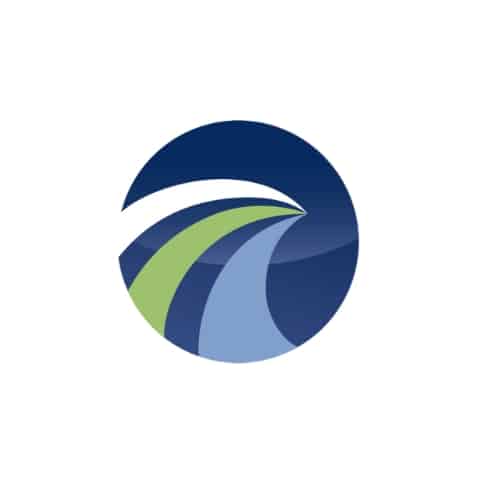There are many opportunities within the revenue cycle to improve the patient experience. Such opportunities include registration collection, securing of authorizations, explanation of benefits, charge capture and coding, and providing a patient friendly statement for services rendered. Understanding your patient’s challenges navigating through the revenue cycle will provide your organization with opportunities to make improvements. One noted area that creates confusion for many patients is the receipt of two self-pay statements. If your hospital has a consolidated medical record, you may have the opportunity to implement Single Billing Office (SBO). SBO has proven results to increase your patient self-pay experience and send a single self-pay statement.
What is SBO? SBO is a platform that consolidates facility and physician patient liabilities into a single guarantor level account. With SBO, your organization can accomplish several things that will improve the patient’s experience:
- Create a single, understandable, itemized bill that contains all charges for all providers and hospital services
- Migrate to a single, centralized customer service team under a single management structure
- Include one phone number on all patient statements
- Provide your customer service team with all of the tools to answer questions without having to transfer a patient between departments for customer service representatives
- Establish one self-pay lockbox that will allow patients to write one check to cover their outstanding self-pay balances owed for medical care
Before your project begins, be sure to have executive sponsorship, as this project will touch all areas within revenue cycle. Assemble a multidisciplinary steering committee to set the scope of the Single Billing Office project to provide guidelines for governance and change management. Create a project team consisting of both operational end-users and technical staff. Create a collaborative environment between operations, training and IT to ensure knowledge transfer and understanding of new workflows. The system design is only as good as the operational design.
Prior to implementing SBO, most customer services areas in hospitals are faced with some of the issues listed below:
- Two patient billing statements
- Two customer service departments, insourced and outsourced, with different job descriptions and operational leadership structures
- Separate bad debt, financial assistance/charity policies
- Separate payment plan management process
- Significant resource overlap
- Multiple decentralized collection and technology vendor relationships
- Limited scalability opportunities as the health system grows
Phase I – Design
During the design phase, your project team will need to determine future staffing needs and create new customer service specialist and self-pay management job descriptions. You may also need to request new FTE’s to offset insourcing of hospital and professional billing customer service, document current state professional and hospital self-pay processes, policies and workflows, design the transition of applicable physician billing work queues into the new SBO model, create new security templates to accommodate new self-pay billing workflows, kick off the design of the new patient statement, develop self-pay follow-up billing and collections strategy, and the design of the new telephonic solution.
- Document all current state process for hospital and professional self-pay workflows
- Create new standard workflows for the combined self-pay billing office
- Design transition of all applicable PB workqueues into SBO environment
- Design new security template for all self-pay end users
- Develop self- pay staffing model based on call volumes, workflows, etc.
- Create new customer service specialist/management position descriptions
- Request new FTE’s, if necessary, to offset insourcing of customer service based on new staffing model
- Kick-off guarantor billing statement redesign
- Determine new technology solutions to assist with implementing new self-pay model
- Cross train HB/PB staff in current resolute billing modules
Phase II – Build Phase
Once you’ve completed your design phase, it’s time to build your workflows. Again, involving your IT and training partners in all your operational workflow design sessions will assist in knowledge sharing and the creation of optimized workflows. Some high-level points to consider in your build phase:
- Build new workflows based on consolidated standard work documents for combined self-pay billing office and payment posting
- Start discussion about the creation and repurposing of reports early
- Design application training material for internal and external staff to include your bad debt vendors
- Transition existing customer service team and began HB/PB training
- Start discussion on collection optimization/propensity to pay tool
- Solicit feedback from patient, staff and survey takers on design ideas for consolidated billing statement
- Select self-pay collection agencies (RFP)
- IVR redesign and consolidation
- Enhance MyHealth web portal and user experience for patient payments
Phase III – Testing
You’ve completed your build and now it’s time to involve end-users. Create test scenarios with end results in mind. Below highlight a few instrumental steps to be taken:
- Unit Acceptance Testing (UAT) in SBO testing environment
- Collection optimization/propensity to pay workflows
- Newly created and repurposed reports to accommodate new SBO workflows
- SBO collection agency extracts
- Finalize guarantor billing statement design, based on patient feedback
- Test billing statement coupons with statement and lockbox vendor
Phase IV – Retesting and Revalidation
Make modifications to workflows based on UAT and retest prior to go-live. Update training materials as necessary and revalidate those changes prior to end-user training. Allow enough time within your project plan to have several iterations of testing.
- Complete testing and validation of all extracts and imports (collection agency, collection optimization, smart text letter, and IVR)
- Validate self-pay dashboard and ATB reports
- Begin customer service and end-user SBO training
- Enhance messaging for incoming IVR
- Create remit files for self-pay lockbox
- Begin insourcing self-pay calls from collection agency
Lessons Learned from Our Customers
- Policies and processes will have to be standardized and aligned to the overall organization and supported by the SBO system
- Develop marketing tools for internal and external customers
- Patient population will need to be educated about the changes to their statements and customer service process
- Methodology of payment distribution
- Ensure vendor alignment with any changes to policies
- Ensure downstream teams and systems are aware of transition and provide documentation and training as needed
Results Seen by One Customer After Implementing SBO
- One call does it all” customer service experience
- 90% first call resolution for billing related inquiries
- 65% reduction in billing related patient complaints/disputes
- 20% reduction in billing statement mailings
- 30% increase in electronic/paperless statement utilization
- Significant increase in collections and decrease in self-pay bad debt resulting from technology enhancements and utilization of collection optimization products
- 52% increase in electronic payment activity
- Ability to disposition approximately 15K inbound monthly patient calls, and collect/trend “voice of the patient” information for upstream distribution and define process improvement strategy
- Decreased overall operational cost, nearly $2M cost savings realized in FY2016
It’s up to your organization to move to SBO; but the results are significant. Contact Impact Advisors if you’re interested in discussing how to make the next step in improving your patient satisfaction.


